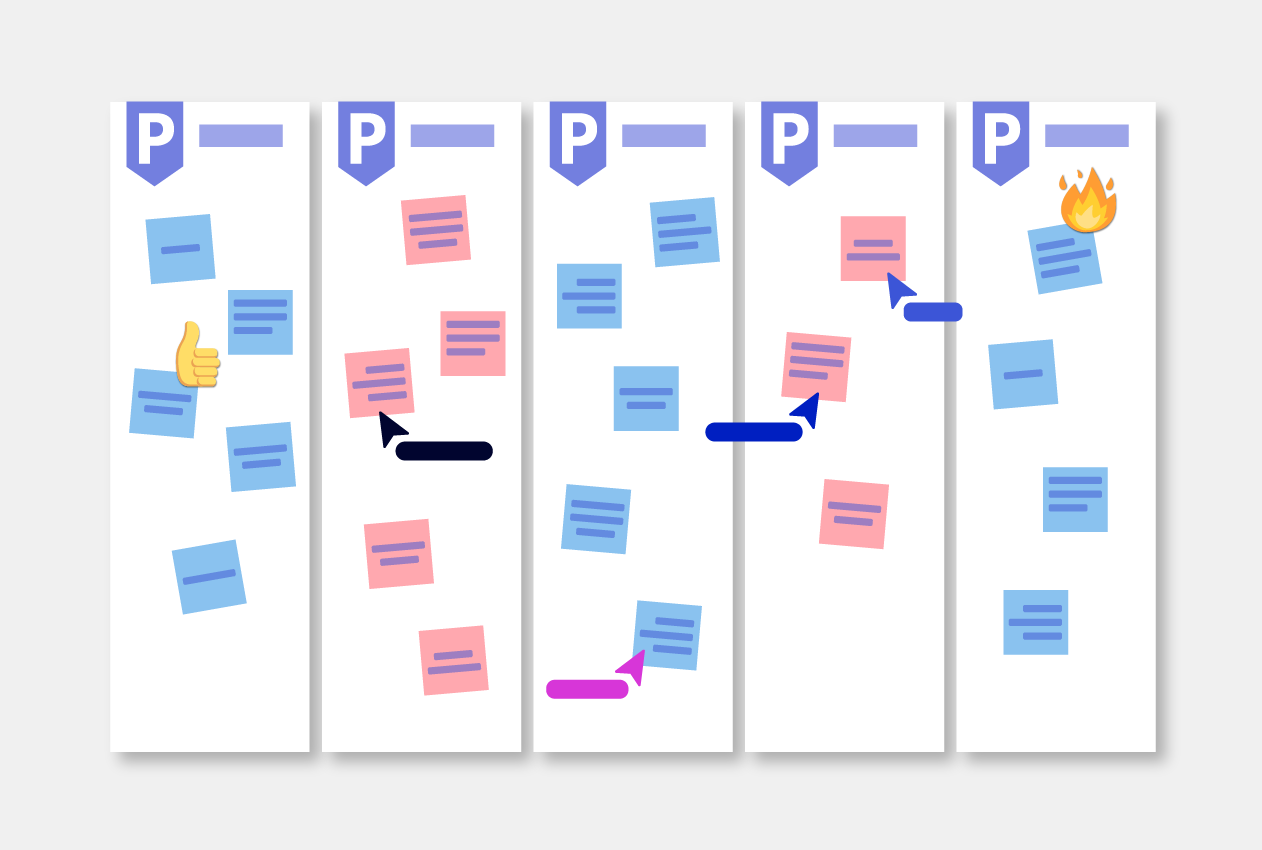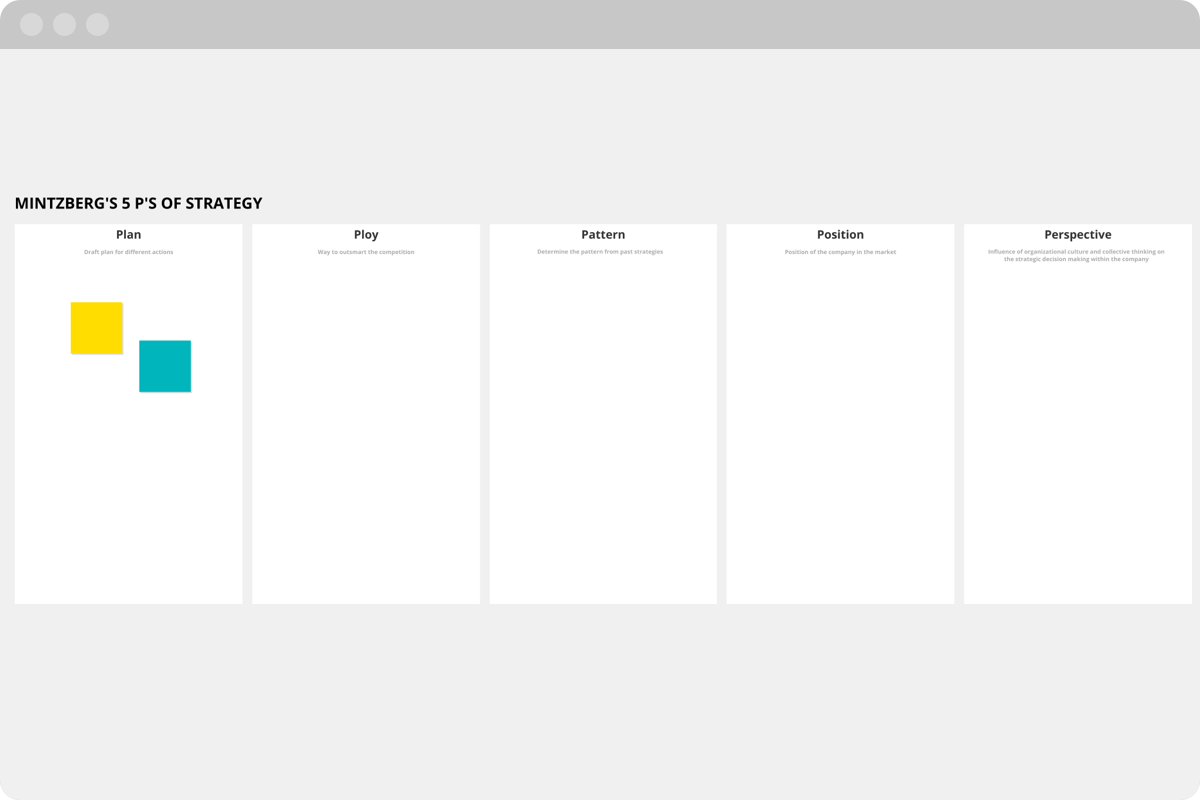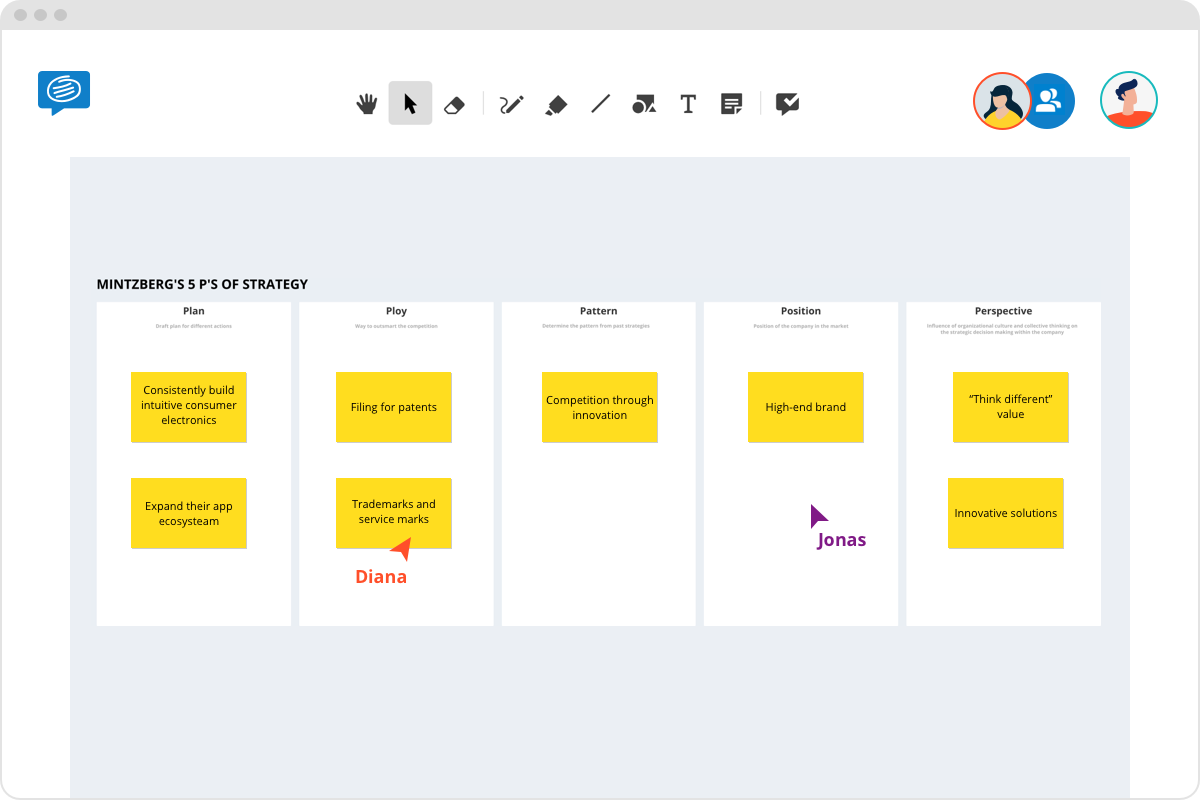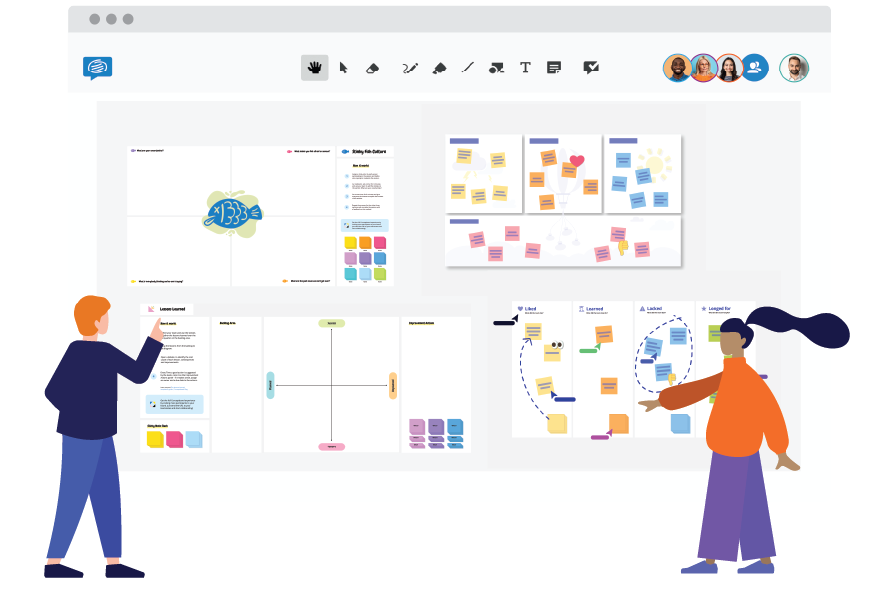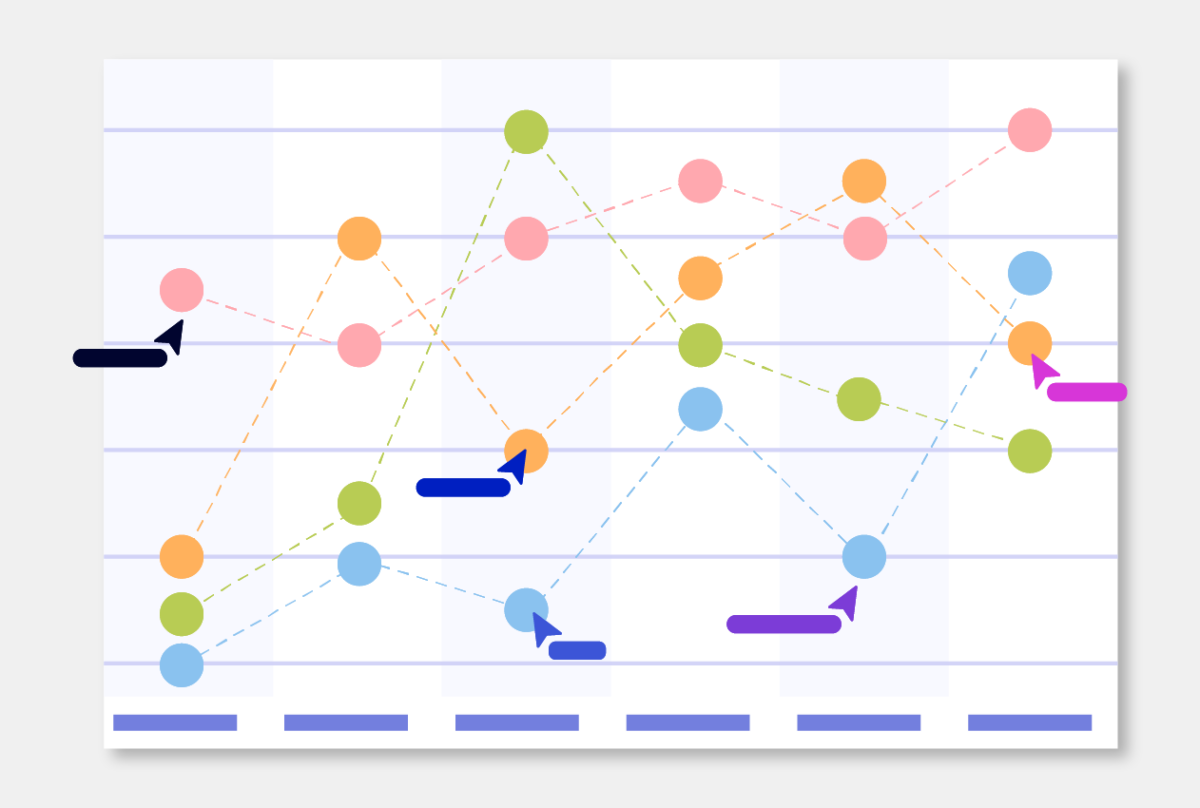For many businesses, strategic planning comprises simply of brainstorming ideas, then pursuing them. While this approach is simple, it’s also risky. Without considering important factors such as your company’s key strengths, culture and competitors, your strategy may fall flat.
To help us look at the bigger picture, we can use Mintzberg’s 5Ps of strategy planning.
What are the Mintzberg’s 5Ps of strategy planning?
Mintzberg’s 5Ps of strategy planning is a framework invented by management expert Henry Mintzberg to help businesses create a well-rounded product strategy. The 5 P’s each stand for a different strategic approach:
- Plan
- Ploy
- Pattern
- Position
- Perspective
Let’s take a deeper look at these five different approaches to developing a strategy.
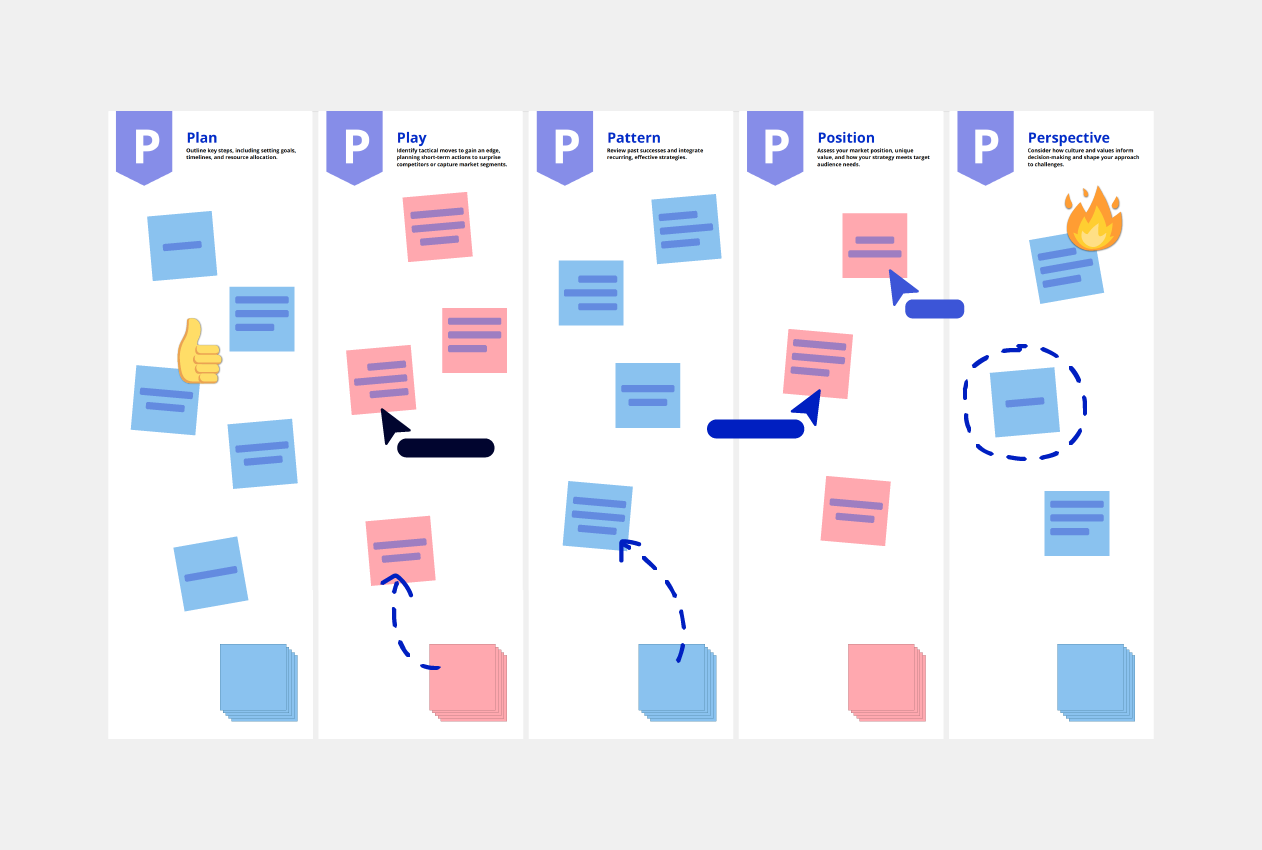
What are the sections of Mintzberg’s 5Ps of strategy?
Plan
Making a plan is something that comes naturally to us. This is the default approach for many businesses, and there are many great resources out there to help you with brainstorming.
Example: Holding a brainstorming session, picking the best ideas and making a go-to-market plan.
Ploy
The second strategic choice involves a ploy that outsmarts the competition and delights customers. This is a tactic that can be used to influence the behavior and reaction of others in the market. The Ansoff Matrix can help you identify gaps in the market.
Example: A grocery chain might threaten to open a new store so that a competitor doesn’t move into the same area.
Pattern
Take advantage of patterns that have been implemented before and have achieved the desired result. Instead of reinventing the wheel, this approach allows you to develop a strategy quickly using tried and true methods.
When it comes to strategic planning, being aware of these patterns, both intentional and unintentional, allows you to use them to strengthen your plans.
Example: Continually hiring staff who have a background in customer service will automatically lead to a stronger customer service division
Position
This approach looks at your position within the marketplace and how you want to position yourself. Identifying your competitive advantage helps you to make decisions that support your place in the market.
The product positioning map is a great tool to help you understand your position in the market.
Example: You might want to develop a low-cost option to our price competitors.
Perspective
While an organization may have a clear idea about what they represent, it’s important to also know how your target audience perceives you. Similarly, how do your employees and stakeholders see you? Not sure? Try the perceptual map template to visualize these perspectives.
Taking this approach will help to make strategic choices that support or improve these views.
Example: An organization that encourages intrapreneurship and innovation might utilize this culture to focus on building innovative products
How to create a Mintzberg’s 5Ps strategy framework
Strategies can be time-consuming to develop, deliver, implement, monitor and improve. Therefore, using a simple template such as the 5P’s can simplify and accelerate the process for your team.
- Open up the template and invite your team to join a collaborative strategic planning session on Conceptboard.
- Work your way through each of the five sections, starting with the plan.
- Ask all team members to add their thoughts onto the board as sticky notes, then discuss and synthesize the ideas.
- If you get stuck at any of the sections, consider pausing and completing one of the mini-analysis we’ve mentioned in the section above.
- Once you’ve completed each strategy framework, take each point and combine it into one simple document.
Combining these five different perspectives of a strategy delivers a sturdier and considered end product.
Mintzberg’s 5Ps strategy framework example
We’ve created a case study on how Apple could use Mintzberg’s 5 Ps of strategy in action. Check it out below.
Understanding and using each of the five elements in your strategic plans will ensure you develop a robust, practical and achievable business strategy.
Conceptboard makes strategic planning within your remote team easy and collaborative. Check out our article on the 10 best strategic templates you can use right now.

